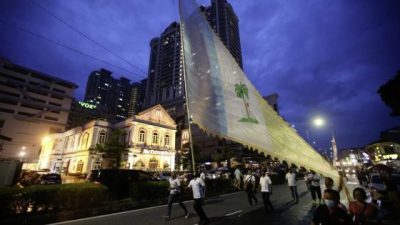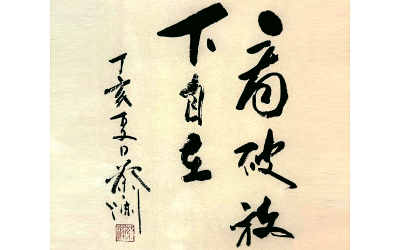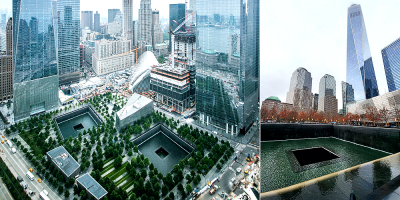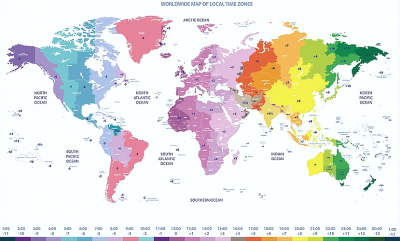By Lee San
I have often come across with heartfelt respect “UNESCO World Heritage Site” signs posted at the entrances of some of the top tourist destinations in many parts of the world. Indeed, one of the most successful missions of UNESCO has been to carefully select immensely significant and priceless cultural gems for humanity, and bestow them with the “world heritage” aura that multiplies their touristic values.
Such sites have not only managed to woo millions of tourists from across the planet, but have also guided their visitors into a more profound understanding of the modus operandi of our planet Earth’s ecosystem, as well as the true significance of the world’s history, cultures and civilisations, in a way that triggers the visitors’ utmost respect for the wisdom of early humans and their marvellous creations.
In 1972, UNESCO passed the Convention Concerning the Protection of the World Cultural and Natural Heritage at its Paris headquarters. Later through the strict selection and evaluation by the experts, the UN body officially released the first batch of 12 World Cultural and Natural Heritage Sites in 1978, including the 19 Galapagos islands and the ancient capital of Quito in Ecuador, the Yellowstone National Park in the US, the Old City of Krakow and Wieliczka subterranean salt mine in Poland. These are the “earliest world heritage sites” that I have visited.
Although these sites are being painstakingly maintained by the experts, I am nevertheless worried they might be slowly destroyed by the forces of nature as a result of climate change.
During the 20 years between 1960 and 1980, UNESCO worked with some 50 countries to save the Nubian ruins submerged by rising water level of the dam in Egypt, including the almost 4,000-year-old Abu Simbel and Philae temples, in the end safely relocating them on higher grounds. Such a massive and demanding operation inspired the birth of the World Heritage Site list, with the emphasis that historical sites can and must be preserved and salvaged immediately.
July 31, 2021, a total of 34 new sites were added during the 44th Annual World Heritage Site Convention in Fuzhou, China, bringing the total number of world heritage sites to 1,154 scattered across 167 countries and territories, including 897 cultural heritage sites, 218 natural heritage sites and 39 mixed heritage sites.
Italy tops with 58 sites, followed by China with 56 and Germany with 51. Japan is ranked 11th with 25 sites while Malaysia has four.
 As a matter of fact, being in the UNESCO list is of the highest honours for every country. The UN body will not only offer financial assistance but also send experts to help maintain the sites, especially historical sites which warrant professional guidance.
As a matter of fact, being in the UNESCO list is of the highest honours for every country. The UN body will not only offer financial assistance but also send experts to help maintain the sites, especially historical sites which warrant professional guidance.
That being said, some of these sites might be removed from the UNESCO list owing to damages caused by natural forces or overdevelopment. Among the earliest heritage sites removed from the UNESCO list include the Arabian Oryx Sanctuary in Oman and the Dresden Elbe Valley in Germany. In this year’s 44th UNESCO Convention, Liverpool Maritime Mercantile City in the UK was stripped from the world heritage list due to overdevelopment.
Additionally, some 53 world heritage sites are put in the list of endangered sites for further monitoring, including the Great Barrier Reef from natural destruction, the Sumatran equatorial rainforests from illegal logging activities, Penang and Melaka from human destruction, as well as Casco Viejo in Panama and Hoi An in Vietnam.
As a matter of fact, be it natural or human disaster, the main culprit which causes most of the destruction has been the indifferent attitude of the authorities towards the true values of these sites.
In addition, the Mulu National Park which was listed in 2000, was once in danger of being stripped of the status. Thanks to the conservation efforts of the experts, the national park’s ecosystem has been largely restored. Notably, the sight of a million bats coming out at night concurrently to look for food has been immensely spectacular. I really hope that the Lenggong archaeological site in Perak listed in 2012 can be properly maintained because it is one of the most important historical legacies of our world.
April 18 has been made the World Cultural Heritage Site Day by the UN. But, nothing in this world is permanent, so are humans. We must do our utmost to preserve our cultural legacies for the appreciation of our children and future generations.
And each time I travel, I’m bound to chance upon one or two of them.
(Lee San is Founder and Group Executive Chairman of Apple Vacations. He has travelled to 132 countries, six continents, and enjoys sharing his travel stories and insights. He has also authored five books.)
ADVERTISEMENT
ADVERTISEMENT








































